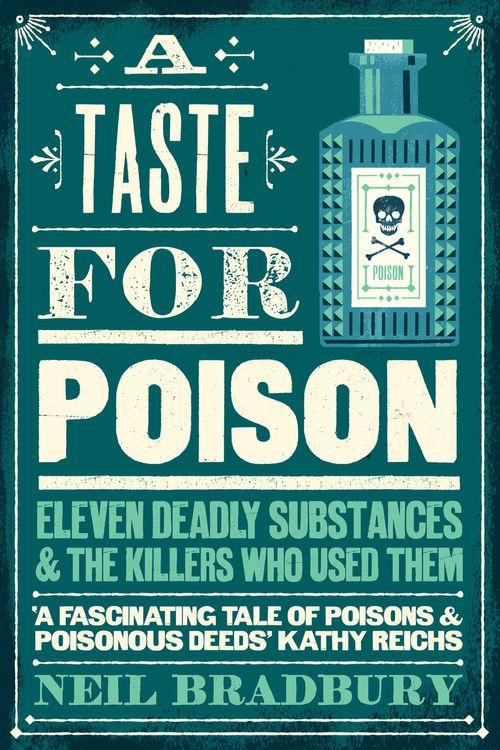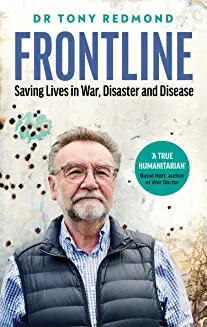By Neil Bradbury https://neilbradbury.org/
Published by Harper North (an imprint of Harper Collins) https://harpercollins.co.uk/
304 pages ISBN 9780008449547
Publication date 20 January 2022
I was provided with a review copy from the publisher, many thanks to Alice Murphy-Pyle for arranging this.
From the blurb
Poison is one of the most enduring weapons of choice for a scheming murderer. In a drink, smeared onto the tip of an arrow or even the handle of a door. But how exactly do these poisons work to break our bodies down, and what can we learn from the damage they inflict?
Synopsis
Over the course of eleven chapters Dr Neil Bradbury describes the most significant substances used as poison by man. These include poisons derived from plant matter, natural toxins, and mineral metals from the earth; comprising aconite, arsenic, atropine, chlorine, cyanide, digoxin, insulin, polonium, potassium, ricin, and strychnine.
Within each chapter he weaves the story of the history of the discovery of the substance, its practical uses, how misuse as a poison can occur and how it works to destroy the body, along with real-life accounts of famous murders both historical and modern.
The Epilogue entitled ‘The Garden of Death’ goes on to describe the special garden at Alnwick Castle which holds over one hundred specimens of poisonous plants, which is not unlike Blofeld’s suicide garden which was a centrepiece of Ian Fleming’s ‘You Only Live Twice’.
Finally, the appendix sets out the details (route of entry, lethal dose, target, symptoms, and antidote) for all the poisons mentioned, but as the author points out this is for educational purposes and not to guide the potential murderer to his/her choice of weapon!
My thoughts
Crime fiction is an enduringly popular genre and, judging by the number of new books and authors, getting bigger every year. There are many crimes of the statute books, but it must be said that the bulk of crime fiction revolves around murder be it revenge, through passion or the work of a serial killer. A good murder was entertaining reading a hundred years ago as much as it is now. What has changed though is the methods of despatch. Poison was used as a murder weapon more often in the ‘golden age’ of the detective story quite simply because murder by poison was still common in those days and would remain so until later in the 20th century when sophisticated detection tests were developed. As the likelihood of detection rose it fell out of favour, though modern compounds have been developed for state sponsored murder in the 21st century. All of which is covered in depth in Dr Bradbury’s book.
As he points out one of the worrying aspects of poisoning is the number of medical people who use it as a means for murder. They have the knowledge of its action as well as access to it and the trust of patients, though following the actions of Beverly Allitt and Harold Shipman more people are questioning.
Poison was seen as the murder weapon of women both in real life and fiction, as they were seen as lacking in physical strength and had limited access to weapons. Times change though and many authors now include deadly women using all manner of weapons and the whole life order on Joanne Dennehy demonstrates that fiction reflects real life.
The writing style, for me, is perfect. The science parts are serious but suitable for a layperson rather than for a chemistry or biology textbook. The true crime aspects are covered with sensitivity rather than being salacious or gratuitous. To keep it from being too heavy there are occasional injections of humour of the silly or absurd rather than being overly flippant, such as the case of Paul Agutter who ended up with Wayne Smith, the man who falsely confessed to his crimes, as cellmate.
As the author points out one of the interesting facts is that drugs created to do good can when administered incorrectly or in excessive doses can be fatal. Insulin has transformed and prolonged the lives of millions of people but has also been used as a poison. Also, in some instances poison can be used as an antidote to other poisons such as atropine to digoxin and the chemistry is explained within the text.
As a reader of crime fiction, I loved linking the symptoms and actions to books I have read and the introduction of some of the famous names. Naturally, Agatha Christie is included as she wrote about poisoners and the author notes a review of ‘The Mysterious Affair at Styles in the Pharmaceutical Journal noted “…we are tempted to believe that the author had pharmaceutical training.” Christie was, of course, a certified pharmacist and worked at University College Hospital under her surname of Mallowan (as I recently read in ‘Murder at the Savoy’). Arthur Conan Doyle also gets a mention through being in the same class as murderer Thomas Neill Cream at medical school in Edinburgh.
Fans of true crime will not be disappointed as each chapter covers something from the Borgias and their creation of the mysterious Cantarella (based on arsenic) through to Alexander Litvinenko being killed with polonium-210 and the unsuccessful attempt on the Skripals (father and daughter) with Novichok.
As befits a serious work there is the expected bibliography together with a series of footnotes for each chapter. My personal preferences are for footnotes to be included at the bottom of the page, but these are often too long and are what may be described as ‘by the way’ facts which could spoil the flow for some readers and are a definite must read.
This is a cleverly put together book which manages to be both entertaining and informative. Whilst reading I did google a number of references for more insight (such as what Mee’s lines look like) so I clearly found it engaging. If you are fascinated by crime you are going to love it!

